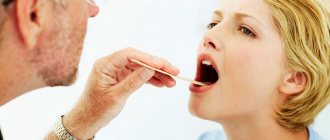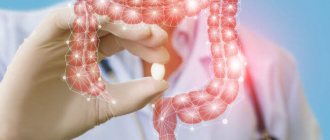The review describes the factors influencing acute and chronic secretion of growth hormone. These factors are: exercise intensity, gender and age of the subjects. The change in the concentration of growth hormone is compared depending on the type of physical activity: aerobic or strength. The article also discusses factors of neuroendocrine control.
Wideman, L., Weltman, J., Hartman, M.L., Veldhuis, J.D. and Weltman, A. 2002. Growth hormone (GH) release during acute and chronic aerobic and resistance exercise: Recent Findings. Sports Medicine 32(15):987–1004.
2002_wideman-l._et-al._gh_rev.pdf
Summarize
- As with other key hormones such as testosterone and estrogen, it is important to have healthy levels of growth hormone.
- HGH helps your body with metabolism, cell repair, and other vital functions.
- By following the tips above, you can increase your HGH levels naturally quite easily.
The article was prepared by experts for informational purposes only. It should not be used as a guide for treating medical conditions and is not a substitute for professional medical advice, diagnosis, or treatment. In case of illness or any symptoms, you should always consult a doctor and not self-medicate.
Tags: Growth hormone
About the author: Larisa Kuts
Board-certified physician specializing in family medicine, geriatrics and integrative medicine. Clinical experience as a physician ranging from disease management to family practice and emergency care.
- Related Posts
- Pine bark extract: properties, uses, side effects
- What is vitamin F? Application, properties, product list
- What is activated carbon? Properties, application, side effects
« Previous entry
How to increase somatotropin levels without injections
Unreasonable use of growth hormone can lead to digestive disorders, liver or kidney diseases, and damage to the thyroid gland. If you want to maintain youthful skin and a slim figure, give up dietary supplements in favor of simple and effective methods of increasing somatotropin levels.
Healthy sleep
Somatotropin is most actively produced during night rest. To maintain the hormone in the blood, the pituitary gland requires at least 7–8 hours of full sleep. Try to get enough sleep, avoid watching movies in the evening, and don’t use gadgets.
Play sports
With regular physical activity, the synthesis of somatotropin accelerates: the body consumes more calories, so the pituitary gland tries to compensate for their deficiency by breaking down fats faster. Exercise for at least 30 minutes 5 times a week, run regularly in the morning, and lead a more active lifestyle.
Contrasting douches
When temperatures change, the body experiences stress, protective reactions are activated, and the work of all systems is activated. Among other hormones, somatotropin is intensively produced, accelerating the breakdown of proteins and carbohydrates. Accustom yourself to a contrasting morning shower to keep you alert and active during the working day. Start by gradually reducing the temperature over 5 seconds, gradually working your way up to 20 seconds.
Introduction
Growth retardation caused by growth hormone (GH) deficiency is one of the pressing problems of pediatric endocrinology. In recent years, thanks to the development of molecular analysis methods, significant progress has been made in studying the mechanisms of expression and deciphering the structure of the genes of the “GH-insulin-like growth factors (IGF)” system. With the introduction of genetic engineering methods for the synthesis of human growth hormone (somatropin), the fate of patients with pituitary dwarfism has radically changed. The use of somatropin for the treatment of children with GH deficiency allows them to achieve normal final growth and ensure a full life.
Human growth hormone is secreted by somatotropic cells of the adenohypophysis and is a peptide containing 191 amino acids. Many forms of GH circulate in the blood, of which 75% are the monomeric form of GH with a molecular weight of 22000. This form of GH has maximum biological activity and maximum affinity for GH receptors. The secretion of growth hormone has a pulsed nature with a pronounced daily rhythm. The main amount of GH is secreted at night, at the beginning of deep sleep, which is especially pronounced in children.
Growth hormone is the main regulator of growth. It stimulates longitudinal bone growth, cartilage growth, growth and differentiation of internal organs and muscle tissue. GH itself does not affect growth: its effects are mediated by IGF-I and IGF-II, which are synthesized mainly in the liver under the influence of GH.
Etiology and epidemiology
There are congenital and acquired GH deficiency, organic (as a result of intracranial injuries of various etiologies) and idiopathic (in the absence of any organic pathology of the hypothalamic-pituitary region). Depending on the level of disturbances in the secretion and action of GH, pituitary deficiency is distinguished (primary pathology of the pituitary gland); hypothalamic deficiency (impaired synthesis and secretion of somatoliberin); peripheral resistance to growth hormone (defects of growth hormone receptors in target tissues).
Classification of causes of deficiency
Congenital GH deficiency
- Hereditary:
- isolated GH deficiency: mutations of the GH gene (4 types of mutations are known), mutations of the somatoliberin receptor gene;
- multiple deficiency of adenohypophysis hormones (mutations of the PIT-1, POU1F1, PROP1, LHX3, LHX4 genes).
- Idiopathic somatoliberin deficiency
- Developmental defects of the pituitary gland or hypothalamus:
- malformations of the midline structures of the brain (anencephaly, holoprosencephaly, septo-optic dysplasia);
- pituitary dysgenesis (congenital aplasia, hypoplasia, ectopia).
Acquired GH deficiency
- Tumors of the hypothalamus and pituitary gland (craniopharyngioma, hamartoma, neurofibroma, dysgerminoma, pituitary adenoma).
- Tumors of other parts of the brain (for example, optic nerve glioma).
- Trauma (traumatic brain injury, surgical damage to the pituitary stalk).
- Infection and inflammation (meningitis, encephalitis, autoimmune hypophysitis).
- Suprasellar cyst, hydrocephalus, empty sella syndrome.
- Vascular pathology (aneurysm in the area of the sella turcica, pituitary infarction).
- Irradiation.
- Toxic side effect of chemotherapy.
- Infiltrative diseases (histiocytosis, sarcoidosis).
- Transitional (constitutional and psychosocial reasons).
Peripheral resistance to GH
- Defects of growth hormone receptors (Laron syndrome).
- Post-receptor defects in GH signal transmission.
- Mutations of the IGF-I and IGF-I receptor genes.
- Biologically inactive growth hormone.
- Suprasellar cyst, hydrocephalus, empty sella syndrome.
GH deficiency occurs with a frequency of 1: 10,000 – 1: 15,000. The most common is idiopathic GH deficiency (65–75%), but as diagnostic methods improve, the proportion of children with idiopathic GH deficiency decreases, and the frequency of organic forms of GH deficiency increases.
Diagnostics
Anamnesis
When collecting anamnesis, take into account:
- timing of the appearance of growth retardation (prenatal; postnatal - in the first months of life, up to 5 years, after 5–6 years);
- perinatal pathology (asphyxia, respiratory distress syndrome, birth trauma);
- episodes of hypoglycemia (convulsions, sweating, anxiety, increased appetite);
- family history (cases of short stature and delayed sexual development in close relatives);
- chronic diseases affecting growth (diseases of the gastrointestinal tract, kidneys, cardiovascular system, blood diseases, hereditary metabolic disorders, endocrine diseases, bone diseases).
Inspection
During the examination, attention is paid to the proportions of the child’s body, facial features, hair, timbre of voice, weight, and size of the penis. Panhypopituitarism is excluded (based on the absence of symptoms of deficiency of other pituitary hormones - TSH, ACTH, LH, FSH, antidiuretic hormone). In addition to short stature, the presence of complaints such as headache, visual disturbances, and vomiting allows one to suspect intracranial pathology. A detailed examination allows us to identify hereditary syndromes that are characterized by short stature (Shereshevsky-Turner, Russell-Silver, Seckel, Prader-Willi, Lawrence-Moon-Biedl, Hutchinson-Gilford, etc.); chondrodysplasia (achondroplasia, etc.); endocrine diseases (congenital hypothyroidism, pituitary Cushing's syndrome, Mauriac syndrome); eating disorders.
Recognition of many rare growth retardation syndromes is based primarily on the typical phenotype.
Anthropometry
Estimated height at the time of examination. For each child with growth retardation, the pediatrician should construct a growth curve using percentile tables of height and weight, compiled from measurements of these parameters in a representative group of children of a given nationality. Up to two years of age, a child’s height is measured while lying down, and over 2 years of age - standing, using a stadiometer.
Growth forecast. To eliminate diagnostic errors, it is of great importance to analyze the child’s growth curve, taking into account the limits of his final height, calculated on the basis of the average height of the parents. If the calculated final height of the child at the time of examination, taking into account bone age, is below the limit of the calculated final height interval, we should speak of pathological short stature. Growth retardation in children with GH deficiency increases with age and by the time the diagnosis is made, the growth in such children, as a rule, differs by more than 3 standard deviations from the population average for a given age and gender.
Growth rate. In addition to absolute growth rates, an important parameter is the growth rate. This is a very sensitive indicator of even the smallest changes in the dynamics of a child’s growth, which reflects both growth-stimulating effects (for example, during treatment with somatropin, sex hormones, levothyroxine) and inhibitory effects (for example, with the progressive growth of craniopharyngioma). The growth rate is calculated for 6 months 2 times a year. In children with GH deficiency, the growth rate is usually below the third percentile and does not exceed 4 cm/g.
Body proportions. Assessing body proportions is important to rule out chondrodysplasias. There are many forms of skeletal dysplasia (osteochondrodysplasia, dissociated development of cartilage and the fibrous component of the skeleton, dysostosis, etc.). The most common form of chondrodysplasia is achondroplasia.
X-ray studies
Determination of bone age. The degree of ossification of the epiphyseal growth plates is an important criterion in the diagnosis of dwarfism and the prognosis of final growth. GH deficiency is characterized by a significant lag in bone age from the passport age (more than 2 years).
To determine bone age, the Grolich and Pyle or Tanner and Whitehouse methods are used. The most popular is the first method, based on a comparative assessment of radiographs of the wrist joint with the standards of the Radiographic Atlas of Skeletal Development of the Hand and Wrist (Greulich WW, Pyle SI, 2nd Ed., Stanford University Press, 1959). Indicators of growth rate and bone age are one of the differential diagnostic signs of pituitary dwarfism and constitutional retardation of growth and sexual development.
X-ray of the skull. An X-ray examination of the skull is carried out to assess the shape and size of the sella turcica and the condition of the skull bones. With GH deficiency, the sella turcica is often small in size. With craniopharyngioma, characteristic changes in the sella turcica are observed: thinning and porosity of the walls, widening of the entrance, suprasellar or intrasellar foci of calcification. With increased intracranial pressure, increased digital impressions and divergence of cranial sutures are visible.
CT and MRI of the brain. Morphological and structural changes in GH deficiency include hypoplasia of the pituitary gland, rupture or thinning of the pituitary stalk, ectopia of the neurohypophysis, and empty sella turcica. CT and MRI are indicated if any intracranial pathology (mass formation) is suspected. It is advisable to use MRI more widely than previously in children before starting treatment with somatropin in order to exclude space-occupying lesions even in the absence of neurological symptoms.
Laboratory diagnostics
A single measurement of GH in the blood has no diagnostic value due to the pulsed nature of GH secretion and the likelihood of obtaining extremely low (zero) basal values even in healthy children. In this regard, other methods are used - studying the rhythm of GH secretion, assessing stimulated GH secretion, measuring the levels of IGF and IGF-binding proteins, measuring GH excretion in the urine.
Assessment of rhythm and integrated daily secretion of growth hormone. The diagnostic criterion for GH deficiency is considered to be a daily spontaneous integrated secretion of the hormone of less than 3.2 ng/ml. The determination of the integrated nighttime GH pool, which in children with GH deficiency is less than 0.7 ng/ml, is also highly informative. Since spontaneous daily secretion of GH can only be studied using special catheters that allow blood samples to be obtained every 20 minutes for 12–24 hours, this method is not widely used in clinical practice.
Stimulation tests. These tests are based on the ability of various substances to stimulate the secretion and release of GH by somatotropic cells. The most common tests are with insulin, clonidine, somatorelin, arginine, levodopa, and pyridostigmine. Any of the listed stimulants causes a significant release of GH (over 10 ng/ml) in 75–90% of healthy children. Complete GH deficiency is diagnosed when its level after stimulation is less than 7 ng/ml, partial deficiency is diagnosed at levels from 7 to 10 ng/ml. A test with somatorelin is carried out for the purpose of differential diagnosis between primary pituitary and hypothalamic GH deficiency. Combined stimulation tests are also used: levodopa + propranolol, glucagon + propranolol, arginine + insulin, somatorelin + atenolol; progestogens + insulin + arginine.
To simultaneously assess several pituitary functions, it is convenient to carry out combined tests with different stimulants and different liberins: insulin + protirelin + gonadorelin, somatorelin + protirelin + gonadorelin, somatorelin + corticorelin + gonadorelin + protirelin. For example, when testing with somatorelin, protirelin and gonadorelin, low basal levels of thyroid-stimulating hormone and free thyroxine in combination with the absence or inhibited release of thyroid-stimulating hormone indicate concomitant secondary hypothyroidism, and the absence of gonadotropin release in response to GnRH in combination with low basal levels of these hormones indicates for secondary hypogonadism.
A necessary condition for conducting stimulation tests is euthyroidism. A reduced response to stimulation is observed in obese children. All tests are carried out on an empty stomach, in a lying position. The presence of a doctor is required. Contraindications for performing an insulin test are fasting hypoglycemia (blood glucose level less than 3.0 mmol/l), adrenal insufficiency, as well as a history of epilepsy or current therapy with antiepileptic drugs. When testing with clonidine, a drop in blood pressure and severe drowsiness are possible. A test with levodopa may be accompanied by nausea and vomiting in 20–25% of cases.
Excretion of GH in urine. To diagnose GH deficiency in children, in recent years it has been recommended to measure GH excretion in urine. The advantages of the method are painless collection of material and the possibility of unlimited repeat analysis. Urinary GH excretion in healthy children is significantly higher than in children with GH deficiency and idiopathic growth retardation. Nocturnal excretion of GH in urine correlates with daily excretion, and therefore it is advisable to study only the morning portion of urine. However, this method for assessing GH secretion has not yet become routine in clinical practice. This is due to the fact that urinary GH concentrations are very low (below 1% of blood GH levels) and require sensitive methods to measure them, as well as the presence of a significant number of interfering factors, such as impaired renal function.
Measurement of IGFs and IGF-binding proteins. The levels of IGF-I and IGF-II are the most significant indicators in the diagnosis of GH deficiency in children. GH deficiency clearly correlates with reduced plasma levels of IGF-I and IGF-II. A highly informative indicator is also the level of IGF-binding protein type 3 (IGFBP-3). Its blood level is reduced in children with GH deficiency.
Diagnosis of resistance to growth hormone (Laron syndrome)
The molecular basis of this syndrome is genetic defects in GH receptors. The clinical picture of Laron syndrome is close to that of pituitary dwarfism, but has a number of differences:
- high degree of growth retardation from birth;
- bone age is behind the passport age, but ahead of the bone age for growth at the time of examination;
- puberty begins at a relatively normal time in approximately half of the patients;
- pubertal growth acceleration is possible;
- frequent attacks of hypoglycemia in early childhood;
- high incidence of congenital malformations.
Hormonal status in children with Laron syndrome includes high or normal basal GH levels, increased GH response during stimulation tests, low levels of IGF-I, IGF-II and IGFBP-3. To diagnose Laron syndrome, a stimulation test is used to assess the secretion of IGF-I. This test consists of administering somatropin for 4 days and determining the levels of IGF-I and IGFBP-3 before the first injection of somatropin and one day after completion of the test. In children with Laron syndrome, unlike children with pituitary dwarfism, the levels of IGF-I and IGFBP-3 do not increase during stimulation. Treatment of patients with Laron syndrome with somatropin is ineffective; for this purpose it is proposed to use recombinant IGF-I.
Treatment
A generalized algorithm for hormone replacement therapy in children with deficiency of GH and other pituitary hormones is presented in Table. 1.
Until 1985, in all countries, for the replacement therapy of GH deficiency, preparations of this hormone were used, obtained by extraction from the pituitary glands of human corpses. Since 1985, after cases of Creutzfeldt-Jakob disease were registered in a number of countries (USA, France, UK), the use of such drugs was officially prohibited.
From now on, exclusively genetically engineered GH, somatropin, is used to treat children with GH deficiency. Currently, the following somatropin preparations have undergone clinical trials in Russia and are approved for use: Genotropin, Norditropin Simplex, Saizen and Humatrope.
Doses and modes of administration of somatropin
When treating pituitary dwarfism in children, there is a clear relationship between dose and growth-stimulating effect, especially pronounced in the first year of treatment. The recommended standard dose of somatropin for the treatment of classic GH deficiency is 0.1 IU/kg/day (0.033 mg/kg/day) subcutaneously, daily at 20.00–22.00. Injection sites: shoulders, thighs, anterior abdominal wall. The frequency of administration is 6–7 injections per week. This regimen is believed to be approximately 25% more effective than 3 intramuscular injections per week.
Indications and contraindications
The indication for the prescription of somatropin is considered to be a deficiency of GH of pituitary or hypothalamic-pituitary origin confirmed by laboratory and instrumental diagnostic methods. Treatment is continued until the growth zones are closed or until socially acceptable height is achieved.
Somatropin is not prescribed for closed growth zones, malignant neoplasms, or progressive enlargement of intracranial tumors. A relative contraindication is diabetes. Before treatment begins, intracranial damage must be eliminated and antitumor therapy completed.
The effectiveness of somatropin treatment
The growth rate at the beginning of puberty determines the patient's final height. Therefore, treatment with somatropin should be aimed at normalizing growth by the beginning of puberty. Early detection and early treatment of GH deficiency are necessary to achieve estimated final height.
The effectiveness of treatment with somatropin depends not only on the dose and mode of administration, but also on the status of the patient before the start of therapy. Clinical data suggest that, in general, the effectiveness of treatment is greater in younger children, with a lower growth rate before treatment, with greater delays in growth and bone maturation, and with greater GH deficiency.
Treatment with somatropin is usually stopped when growth rate is less than 2 cm/year or when bone age is more than 14 years in girls and more than 16–17 years in boys.
The criterion for the effectiveness of therapy is an increase in the growth rate several times from the initial one. The maximum growth rate - from 8 to 15 cm / g - is observed in the first year of treatment, especially in the first 3-6 months. In the second year of treatment, the speed decreases to 5–6 cm/g. Growth rate indicators in the second and third years of therapy do not differ significantly.
The experience of the children's clinic of the Endocrinology Research Center of the Russian Academy of Medical Sciences in the treatment of children with pituitary dwarfism with various genetically engineered growth hormone preparations [1, 2] and the vast experience of foreign endocrinologists [3–6] indicate the high effectiveness of somatropin replacement therapy. With early and regular treatment, it is possible to achieve the predicted growth. In addition to treatment with somatropin, children with panhypopituitarism require concomitant replacement therapy with other hormones according to indications (see Table 1).
It is known that the final height in children with combined GH and gonadotropin deficiency is greater than in children with isolated GH deficiency. This is explained by delayed puberty and, as a consequence, slower closure of the epiphyseal growth plates in secondary hypogonadism. Therefore, spontaneous or sex hormone-induced pubertal development and the associated accelerated bone maturation are regarded by many authors as a factor that reduces the effectiveness of somatropin and reduces final growth. In this regard, artificial inhibition of puberty in children with isolated GH deficiency through the combined use of somatropin and long-acting GnRH analogues at the beginning of puberty is justified. Based on the same considerations, in children with multiple deficiencies of pituitary hormones, when treatment with somatropin is started late, puberty is stimulated as late as possible, if possible after achieving the predicted growth.
In addition to increasing linear growth, during somatropin therapy, positive changes are noted in the hormonal, metabolic, and mental status of patients. The anabolic, lipolytic and counter-insular effects of somatropin are manifested by increased muscle strength, improved renal blood flow, increased cardiac output, increased intestinal calcium absorption and bone mineralization. The levels of low-density lipoproteins in the blood decrease, and the levels of alkaline phosphatase, phosphorus, urea, and free fatty acids increase within normal limits. The vitality of patients increases and their quality of life improves significantly. Children willingly accept treatment, many make injections on their own.
Recommendations for monitoring children receiving somatropin treatment are presented in Table. 2.
Side effects of somatropin
Risk of neoplasms
At the beginning of the use of somatropin, there were suggestions of an increased risk of relapses in children previously treated for malignant neoplasms (leukemia and brain tumors). However, to date there is no evidence that treatment with somatropin increases the risk of relapse in children with brain tumors. Relapses during somatropin therapy after treatment of leukemia are always associated with other indicators of poor prognosis. There is also no evidence that treatment with somatropin increases the risk of leukemia in children with idiopathic GH deficiency in the absence of other additional risk factors. Children with GH deficiency caused by organic pathology (space-occupying brain processes) should be carefully examined for its progression or relapse. Children receiving somatropin after surgery for brain tumors should be monitored by an oncologist and a neurosurgeon.
Immunological disorders
Previously, when using pituitary and methionyl-containing GH preparations, 30–40% of children with pituitary dwarfism developed antibodies to GH. In this regard, one of the complications of treatment for GH deficiency was a decrease in growth rate in children with high levels of antibodies to GH. The use of genetically engineered drugs of the latest generation leads to the formation of antibodies to GH only in isolated cases.
Effect on carbohydrate metabolism
Treatment of children with GH deficiency with somatropin does not increase the risk of diabetes mellitus. However, during long-term treatment, it is recommended to periodically monitor the state of carbohydrate metabolism (see Table 2). With prolonged use of large doses of somatropin in children without classic GH deficiency and with concomitant diabetes mellitus, the course of the latter may worsen. There are reports that treatment with somatropin normalizes fasting glucose levels in children prone to hypoglycemia.
Effect on hormonal status
Treatment with somatropin may provoke clinical manifestations of latent hypothyroidism. During long-term treatment with the drug, the development of subclinical or severe hypothyroidism is possible. In this regard, monitoring the functional state of the thyroid gland is necessary.
Severe side effects
When treated with somatropin, they are very rare. They include benign intracranial hypertension, prepubertal gynecomastia, arthralgia, and fluid retention. To identify them, a carefully collected anamnesis and a careful examination are sufficient. To eliminate side effects, a temporary dose reduction or temporary discontinuation of somatropin may be required.
Thanks to the virtually unlimited possibilities for obtaining somatropin, the indications for its use have expanded significantly and are currently not limited only to the treatment of pituitary dwarfism. There is evidence of the effectiveness of somatropin in the treatment of children with intrauterine growth retardation, familial short stature, Shereshevsky-Turner, Russell-Silver, Prader-Willi, Noonan syndromes, Fanconi anemia, pituitary Cushing's syndrome, glycogenosis, chondrodysplasia, condition after irradiation for leukemia and tumors brain, after kidney transplantation, with chronic renal failure.
Growth hormone: normal level in the blood and how to check
The normal concentration of growth hormone in the body is 1-5 ng/ml. Peak concentration reaches 10-20 and even 45 ng/ml. Typically, peak secretion occurs every 3-5 hours. The highest concentration occurs at night, approximately 1 hour after falling asleep. With age, GH is synthesized less and less, which is why additional supplements have to be used.
The most effective way to test growth hormone is to take a blood test. In almost any laboratory that conducts blood tests, you can test for growth hormone, as well as IGF-1 - insulin-like growth factor 1, which helps increase natural somatotropin.
Don't eat before bed
Your body naturally releases significant amounts of growth hormone, especially at night (, ).
Given that most meals cause insulin levels to rise, some experts suggest avoiding eating before bed ().
In particular, eating high carbohydrate or high protein meals can increase insulin levels and potentially block some of the growth hormone released at night ().
Keep in mind that there is not enough research on this theory.
However, insulin levels typically decrease 2 to 3 hours after eating, so you may want to avoid carbohydrate- or protein-based meals 2 to 3 hours before bed.
Summary:
More research is needed into the effects of eating at night on growth hormone. However, it is best to avoid eating 2-3 hours before bed.
Optimize your sleep
Most growth hormone is released in bursts when you sleep. These impulses are based on your body's internal clock, or circadian rhythm.
The largest pulses occur before midnight - smaller pulses early in the morning (, ).
Research has shown that poor sleep can reduce the amount of growth hormone your body produces ().
In fact, getting enough deep sleep is one of the best strategies for increasing long-term growth hormone production (, ).
Here are some simple strategies to help optimize your sleep:
- Avoid exposure to blue light before bed (monitor screen, smartphone, TV).
- Read a book in the evening.
- Make sure your bedroom is at a comfortable temperature.
- Avoid caffeine late in the day.
Summary:
Focus on optimizing your sleep quality and aim for 7-10 hours of quality sleep per night.










